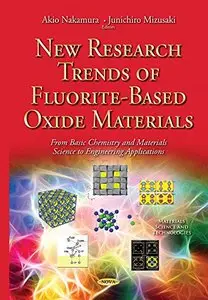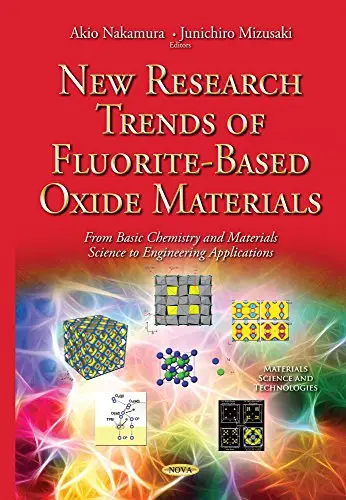New Research Trends of Fluorite-Based Oxide Materials: From Basic Chemistry and Materials Science to Engineering Applications (Materials Science and Technologies) by Akio Nakamura and Junichiro Mizusaki
English | 2015 | ISBN: 1631173502 | 315 pages | PDF | 11,7 MB
English | 2015 | ISBN: 1631173502 | 315 pages | PDF | 11,7 MB
Fluorite-based oxide materials such as stabilized zriconias, doped cerias, and urania represent a group of the most important key engineering materials in our modern society, with their well-known various electrochemical, ceramic and nuclear etc. applications. This is primarily due to their multi-lateral excellent physical/chemical properties such as high chemical/structure stability, high oxide ion conductivity, superior mechanical strength, and unique nuclear properties, and so on. For example, urania UO2 and urania-plutonia mixed-oxide (U,Pu)O2 are almost exclusively used to represent nuclear fuels in commercial nuclear power plants throughout the world. Also in non-nuclear next-generation clean hydrogen energy technology such as solid oxide fuel cells (SOFCs), stabilized zirconias and doped cerias are the key solid electrolyes (oxide ion conductors) for their current and future more efficient versions. Stabilized zirconias, the most widely used fluorite materials, find other various practical and potential applications such as solid electrolytes for oxygen sensors/monitors/pumps, thermal barrier coatings, conventional and novel super-plastic and ultra-hard structural/refractory ceramics, high-pressure media, dielectric insulators/substrates, catalysts, synthetic teeth/jewels, etc. in non-nulcear areas and inert-matrix fuel and radioactive nuclear waste form in the nuclear area. Ceria-based systems have recently attracted increasingly more attention also as catalysts for pollution gas/liquid managements and chemical substance syntheses. Concurrently with such expanding technological applications, the rapid progress of various theoretical, computational and experimental research techniques in recent years has brought a great advance in our understanding of their key basic properties, such as bulk thermal, thermodynamic, mechanical, defects and transport properties, grain boundary structure, gas/solid interfacial electrochemical, catalytic and local-structural properties, and radiation tolerance, and so on. In this book, with the hope of covering as wide a range as possible of basics and applications of these fascinating oxide materials in a single book, the eleven experts were invited to contribute one chapter each and intend to convey a timely up-to-date comprehensive review of their latest research trends. We believe this book will not only further stimulate the interest of concerned chemists, physicists and materials scientists in these materials, but can also serve as a unique guide for young undergraduate and graduate students.



